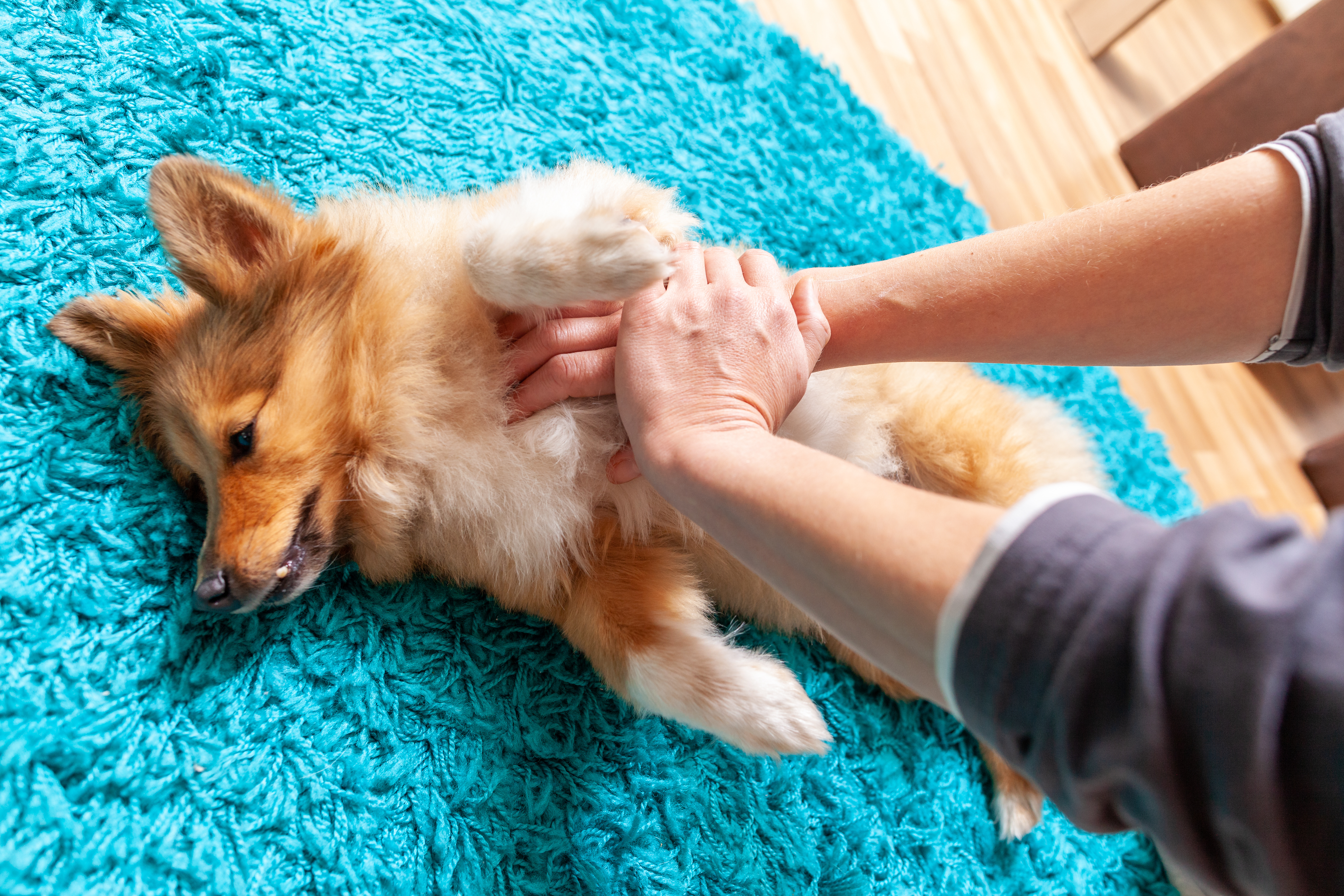First aid for dogs and pets
Do you know first aid techniques for dogs? Your pets can also suffer accidents. So, you should be prepared.
pets
Share

A happy pet plays, runs, has fun... And during these activities, they may suffer a small accident that we must attend to. Of course, if you notice any anomaly in the animal’s health, you must go to the vet, but it’s worth knowing some first aid techniques that you can perform on your animal in case of emergency.
How to assess the state of the dog
To assess the state of the dog you must know the normal parameters of breathing, temperature (for dogs and cats it is 38-39ºC), heartrate (for dogs it ranges between 80-120 beats per minute, and for cats between 80-200) and the state of the mucous membrane that you can assess by looking at the gums or the inside of the eyelids. A pinkish colour will indicate that everything is ok. If it’s white, the animal has lost blood; if it’s bluish, it indicates a lack of oxygen; red is an indication of haemorrhage, fever or hypertension, and if it looks yellow, it can indicate liver failure.
CPR in dogs
Cardiopulmonary resuscitation (CPR) is one of the most complex manoeuvres to perform on a dog, and it’s not advisable to do it if you don’t know how to do it correctly. Only if the dog isn’t breathing and you can’t feel the heartbeat should you risk doing it. It’s always better if a vet is guiding you, as it’s a distressing moment for the person doing it and, if performed poorly, this manoeuvre can have serious consequences for the dog. It’s also important to know that it’s rare for this manoeuvre to be successful.
If the dog isn’t breathing, and you feel like you should perform CPR, you must place the dog lying on its right side. The cardiac massage is performed at the point where the elbow touches your chest when flexing the leg. When perform CPR, you must take into account the weight of the dog and if, after 10 minutes, the dog isn’t breathing, it hasn’t worked.
Heimlich's manoeuvre in dogs
Dogs can choke on food or other objects. If this happens, we have to see if they cough and breath. If so, we will let them cough because they will likely be able to eject the choked object stuck in the trachea.
If they don’t breathe or cough, you have to put your hand in their mouth to see if there are any objects. If you can’t see any, turn the dog upside down as if it were a wheelbarrow, raise its hind legs and give it several shakes to see if it expels the object.
If none of this works, you can try the Heimlich manoeuvre, which involves giving a few dry blows in the pit of the stomach upwards. To do this, place yourself behind the dog, put your hand behind the last rib and, with the other hand, surround the fist and press up about 5 or 6 times until the object is expelled. After the manoeuvre, the dog must recover oxygen and must be taken to the vet for a thorough examination.

How to find the pulse in a dog
To check the pulse of a dog, we must lie it on its side and remain calm and relaxed. Take its paw and place your index and middle finger above the knee, more or less, in the middle of their inner thigh, and feel until you find the beat of the femoral artery. Count the beats for 15 seconds and multiply by 4. Assess the result by taking into account the normal heart rate of a dog.
First aid for dogs
Paw injuries, bites, poisonings, allergic reactions or ingestion of objects are some of the most common pet accidents. We recommend having a basic medicine cabinet at home for some simple cures and first aid:
- Physiological saline solution to clean out wounds (better in single-dose containers).
- Topical antiseptic.
- Healing ointment.
- Anti-inflammatory ointment.
- Thermometer.
- Sterile gauze for dressing.
- Bandages.
- Tweezers to remove foreign bodies.
- Plastic syringe.
- Round-tipped scissors.







